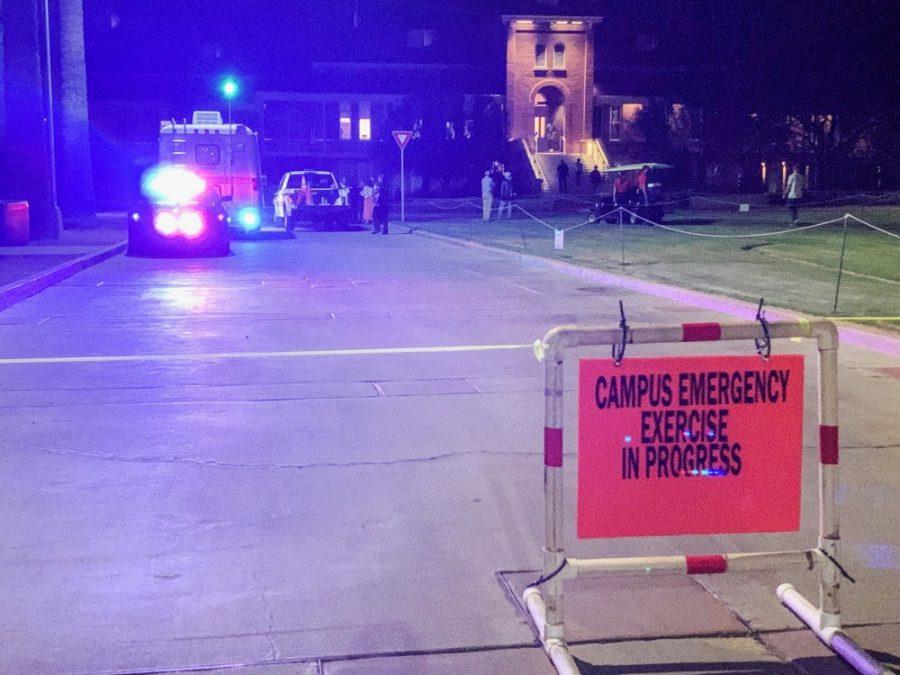Despite being in the national consciousness for decades now, the term “mass shooting” reached its peak during a six-day stretch in August, according to Google’s analytics of trending search terms, which began tracking this data in 2004.
The term has been steadily trending before August and has hit peaks during times of media coverage of major mass shootings in America.
As of August 20, 2019, there have been 265 mass shootings in the U.S., according to data from the Gun Violence Archive.
However, with help of the Critical Incident Response Team, the University of Arizona Police Department practiced what to do during such an event with it’s active shooter drill on Aug. 14.
RELATED: UA Police Chief Seastone talks safety for the new school year
“In a simulated environment such as this, we are able to test our current operating procedures and responses for these situations,” UAPD Police Chief Brian Seastone said. “This one event has helped us in multiple areas.”
The exercise took place near Old Main and lasted around seven hours.
According to Seastone, the exercise showcased the effectiveness of CIRT. The team was able to respond well and use their prior knowledge and experience to get all the information they could.
“They made us think, ‘Should we cancel classes?’ or what classes were affected or ‘What resources we can get to our area fast?’” Seastone said.
For Seastone and the UAPD team, the exercise showed what needed to be improved upon as well.
According to Seastone, the thing that can always be improved on the most no matter what is communication.
“We are always thinking, ‘How can we do better?’ or focusing on the little easy fixes,” he said. “Stuff like consistency and the way things are dispatched.”
In order to get the full picture, the scenario had to be as realistic as possible. Warnings were given through email that this would take place and that people with fake blood would be part of the exercise.
“The scenario will be performed as realistically as possible, including role players made up to look like injured victims, police officers running to the scene, and noise simulating gunfire,” according to an email from UAPD.
The exercise took six months to plan and is not necessarily a response to recent tragedies in America, according to Seastone. Other exercises for these scenarios include what Seastone calls “table-top” exercises that help with improvement upon specific areas within a plan of action.
This drill is not the only way UAPD prepares for worst-case scenarios. “There are a lot of exercises that the public won’t see, like our table-top exercises,” Seastone said.
While the UAPD team will be trained, Seastone also thinks that the public should practice ways of keeping themselves safe.
“As we put out in the [email], sign up for UAlert — it’s the most efficient,” he said. “UAlerts is immediate and it’s the quickest way to get updated. I mean people won’t sit around their emails they will be on the move.”
According to the UAlert website, “UA Alert is a free service that delivers emergency alerts to registered UA students, faculty and staff — as well as their friends and family – via their cell phones, mobile devices and/or email accounts during a campus emergency.”
RELATED: Resources to help you stay safe on campus
Another way that civilians can help protect themselves is downloading the LiveSafe app from the Apple App Store or the Google Play Store.
According to Seastone, the LiveSafe app is great for people who are in a room but can’t communicate openly, they can simply text the police department for help through the app.
“These exercises are important to our campus’ safety mission,” Seastone said. “They are realistic simulations that are critical to our preparedness.”
Follow Nicholas Trujillo on Twitter









